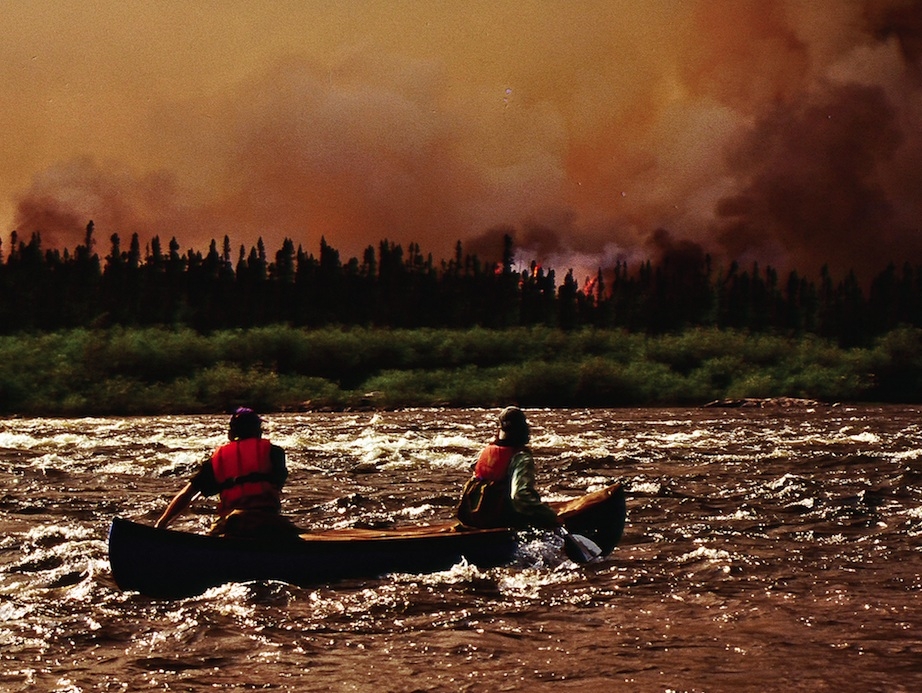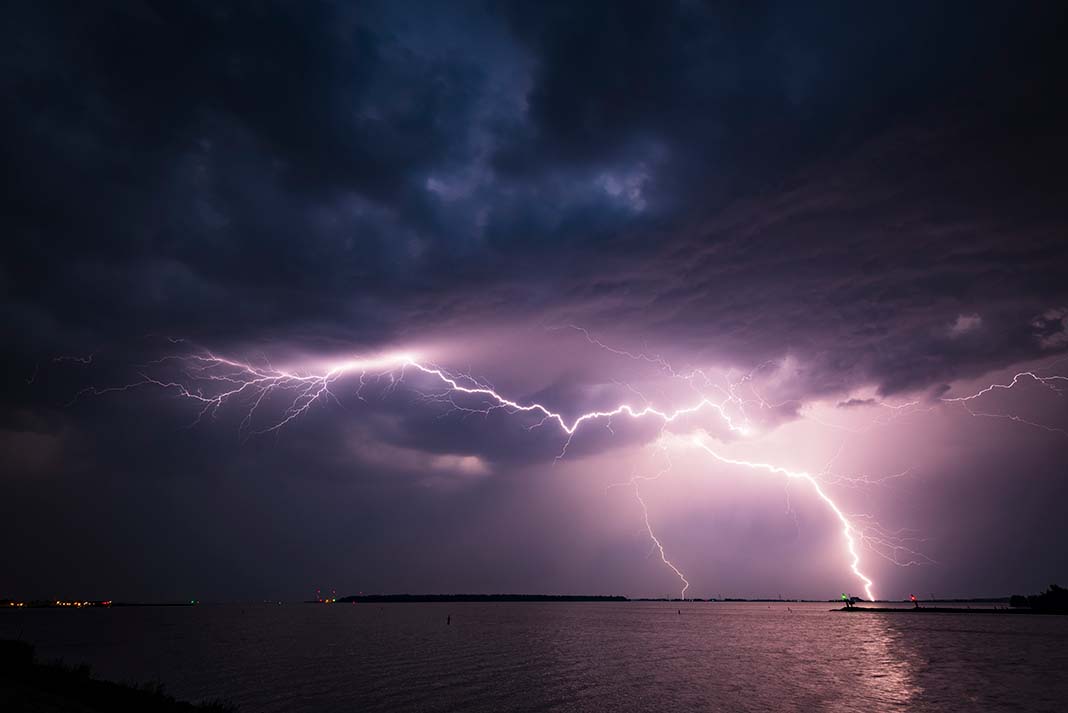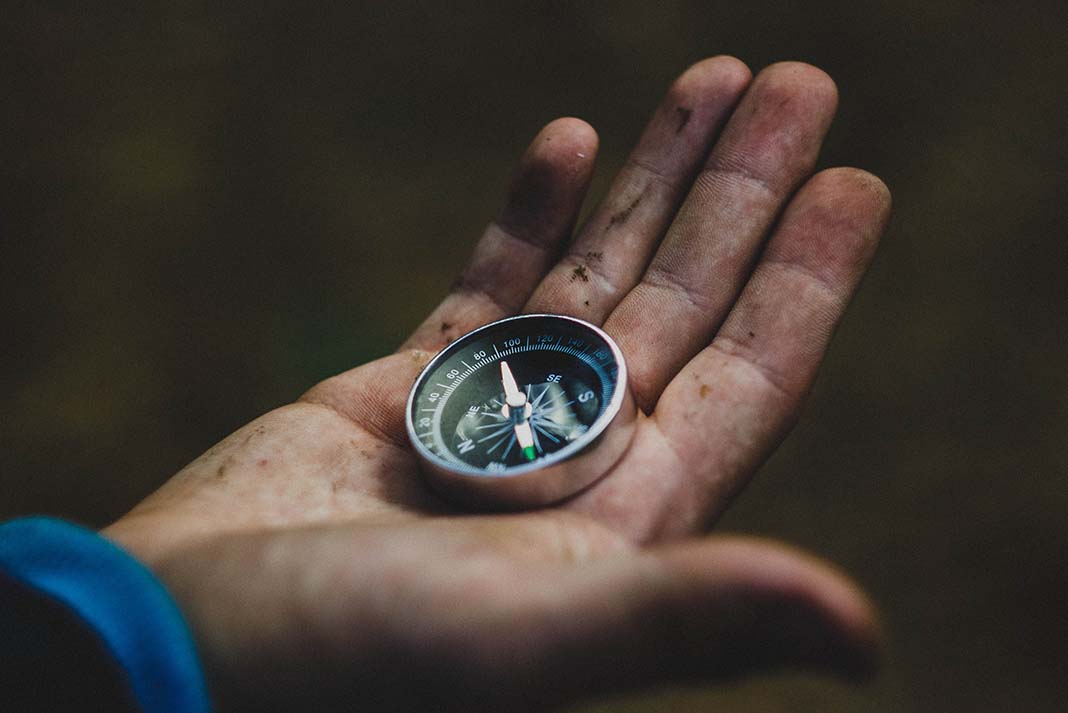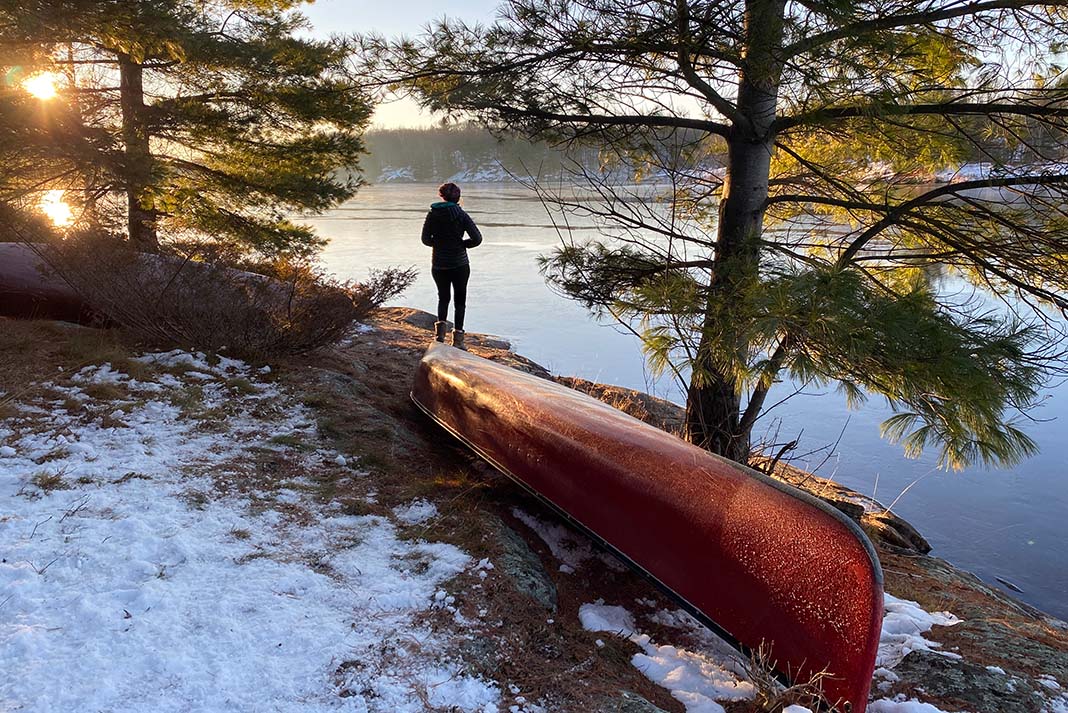Products You May Like
Anyone who’s been on an overnight paddling trip knows that it pays to plan ahead. But some things are easier to anticipate than others, especially when it comes to wildlife, wild weather and the people you might meet along the way. To help you prepare for anything, we’ve gathered expert tips from paddlers who have been there before—and survived to tell about it.
Survive anything on your next paddling trip
1 Your first skinny dip
Kathleen Gallagher is probably the unluckiest first-time skinny dipper. The canoe trip virgin followed Wild Women trip mates into inviting Murray Lake, but the inaugural dip didn’t go as planned. “I felt a flapping between my thighs” as the snapping turtle clamped down, recalls Gallagher. Although Gallagher’s injuries were easily remedied with a happy face Band-Aid, keep these tips in mind when baring your bottom.
1. Choose a secluded lake
Skinny dipping is illegal in some parts of North America. Beth Mairs, founder of Wild Women Expeditions, asks us to, “Think practical. It’s ridiculous to wear a wet bathing suit or drag it around throughout a canoe trip.”
2. Be safe
Pick a clean location and watch out for glass, garbage, clams and snapping turtles. The last thing you want is to ride in an ambulance naked.
3. Enjoy
Nothing is more wonderful than the feeling of lakewater on your skin.
2 A forest fire
Forest fires spread quickly—up to eight kilometres per hour—much faster than we can run or paddle. The smell of smoke, a light dusting of ash on canoes or tents and unusual behaviour from birds and mammals are usually the first signs of an encroaching fire.

The SAS Survival Guide recommends staying calm, upwind of the fire (if possible) and moving to the closest body of water such as a lake or river. If you become trapped in the fire, do the following:
- Keep your clothes on, as they protect you from the intense heat of a fire. Cover any exposed skin.
- Semi-immerse yourself in the water. Care should be taken to avoid hypothermia.
- Cup your hands around your nose and mouth or breath through a bandana.
3 Lightning
Lightning strikes down more people than tornadoes, snowstorms and hurricanes and remains a top offender in storm-related deaths.

According to Environment Canada, nine to 10 people are killed and 92 to 164 are severely injured in Canada each year. And if you’re a guy, the stats don’t point in your favour. NASA says you’re four times more likely to be struck. So here’s how to avoid this 27,760°C bolt.
- Head to shore as soon as you see a flash of lightning or hear a rumble of thunder.
- Avoid being the tallest thing around. Stay away from tall trees, hilltops, cliffs, open water and caves. Find a level spot of terrain.
- Adopt the lightning ready position. Crouch down with your feet close together, preferably on a Therm-a-Rest insulated sleeping pad or PFD, to wait out the storm.
- Remove any jewellery and stay away from metal objects—this is not the time to be fiddling with aluminum tent poles.
- If you’re in a group, spread out—it’s your best chance of survival.
4 The first scratch
The chalk-like squeal of Kevlar grinding over granite isn’t pretty, especially when you notice the trail of red gelcoat left behind. Before playing the blame game or signing divorce papers, understand this law of attraction: shiny, new, expensive canoes are magnetically attracted to rocks. Install skid plates for good measure.

5 Blood-sucking leeches
Do thoughts of the scene in the 1986 hit movie Stand By Me, where child actor Wil Wheaton pulls a fat, slimy leech out of his underpants, send chills up your spine? If so, there’s little reason to worry—only a few species of leeches feed on humans. However, if one attaches to you, here’s what to do.
Do: The best method is to wait 10 to 20 minutes until the leech detaches itself. But if that’s too gross, place your fingernail next to the leech’s mouth, which is located on its thinner end, and slowly slide the nail underneath to dislodge its sucker. Wash the wound with soap and water.
Don’t: As tempting as it might seem, don’t rip the leech off. This tears your skin and can cause infection. Another treatment commonly prescribed is the application of salt or heat from a flame. While these methods work, they cause the leech to regurgitate into the open wound, which can cause infection, and is even grosser.
6 Broken tent pole
Remember, prevention is key, and yes—even 10mm aluminum poles can break. When putting poles together, make sure that they are well seated into each other and be careful not to drop them on hard surfaces.
If your pole breaks on trip, a pole sleeve in your repair kit really comes in handy. Fresh out of pole sleeves? Grab a strip of birch bark (from a dead tree), wrap it around the pole a few times and slap on some duct tape to hold it in place.
7 Locals
It goes without saying, if you hear banjo music make sure you paddle as fast as you can and don’t look back. All kidding aside, as representatives of the paddling community it is our responsibility to act in a respectable and friendly manner toward locals. Keep in mind that we are in their backyard.
Friendly conversation, leaving the site clean and keeping your speed down when driving through small communities helps boost the public image of paddlers. Also, before travelling to an area, learn the public put-ins and camping.
8 Icy water
Don’t panic. Panic can result in inhalation of large amounts of water and zap precious energy critical to survival. The U.S. Search and Rescue Task Force says that “cold water robs the body’s heat 32 times faster than cold air and all efforts should be given to getting out of the water fast.”

Failing a speedy exodus from this numbing situation, conserving energy will effectively extend your survival time. “Cross your arms tightly against your chest and draw your knees up” if you’re wearing a PFD, says the Canadian Red Cross. “The HELP (Heat Escape Lessening Position) can increase your survival time by 50 per cent.” Prevention is your best means of survival.
9 River strainers
A strainer is a tree that has fallen in the current and traps everything that tries to float through it. According to river rescue experts, if you are out of your boat and headed towards a strainer, swim aggressively towards it and try to launch yourself up on top of it.
10 Losing your canoe
If you’ve followed wilderness tripping wisdom, you’ll be travelling in a group of at least three canoes. Pare down your kit and stash excess gear in a location you can return to. Now the two remaining boats have three paddlers each and it’s time to go canoe hunting. Be aware that the missing canoe is an elusive creature and you may very well have to finish your trip without it.
If you’re tripping solo, your canoe trip has just turned into a hiking trip. A satellite messenger, full maps of the area, a compass and a GPS device are extremely handy in these situations.
11 Being lost in the woods
The first thing you should do is S.T.O.P.—Stop, Think, Observe and Plan. Created by SAS survival instructor Lofty Wiseman, this acronym may save your life. Stop moving, take an inventory, make yourself comfortable and assist searchers by being noticeable. If your plan is to move, leave a trail of clues that searchers can follow.

12 Marshmallow burn
After discussing the hazards of waving about flaming marshmallows with a group of 13-years-olds, Family Camping contributor and guide Virginia Marshall was smacked in the cheek with a flaming ball of sugar and gelatin. “It was surprising and painful,” recalls Marshall, who was left with a second-degree burn.
Instead of waving it, Marshall offers this advice: If your marshmallow catches on fire, calmly blow it out, and make sure your first aid kit is stocked with moist burn pads.
13 Living without Facebook
Update everyone in your group with your status hourly. Comment on everything anyone else says. Invite other paddlers you meet to be your friend. Bring chalk to write on rock walls. Send invitations to people for all events, like breakfast and dishes. Give thumbs up to everything you like. Begin campfire stories with, “My name is Jim and I’m a social media-holic.” Do solo trips.
14 Capsized canoe
If you are travelling in a group and you capsize in the middle of a lake or moving river, then a canoe-over-canoe rescue may be your best option.
- Form a T-shape with the rescue canoe alongside the end of the overturned boat.
- Grab the end of the capsized canoe and lift it onto your gunwales while instructing the swimmers to push down on the far end to help break the suction of the overturned boat.
- Slide the upside-down canoe across your gunwales so both ends are out of the water, then flip the drained boat right side up and slip it back into the water.
- Stabilize the canoe alongside your own while the swimmers climb back in one at a time.
15 Avoid hypothermia
Avoid hypothermia by staying warm and dry. The best defense is to always wear appropriate immersion protection when paddling in cool temperatures and especially when paddling on cold water.
If someone is cold and shivery, getting the person out of wet clothes and into warm, insulated gear is the first order of business. Use the casualty’s own heat generating ability. Think lots of hot chocolate, squats and running on the spot. Be on the lookout for the “umbles”—stumbles, mumbles and fumbles—which may mean their body temperature is dropping.
In the advanced stages of hypothermia, the person becomes disoriented and confused and may stop shivering. Bundle in sleeping bags and place Nalgene bottles filled with hot water alongside groin and under armpits. Seek emergency medical care.
16 Survive a moose attack
Moose are pretty chill creatures, but according to Wikipedia, in terms of raw numbers, moose attack more people than bears and wolves combined—usually with only minor consequences.

Males may be more aggressive in the fall during the rut, and females in summer while protecting calves. Give moose a wide berth and watch for warning signs that a charge may be imminent: ears back, grunting and stomping feet.
Should a moose charge, try to:
- Make a run for it, but know that moose can run at 35 kilometers an hour.
- Get behind a large tree and play a 720-kilogram game of ring around the rosy, keeping yourself opposite the moose.
- If a moose knocks you down, adopt a fetal position and protect your head. Play dead and don’t fight back. The moose may stomp and kick at you, but will generally leave. Minor consequences, my (bruised) ass.

This article originally appeared in the Fall 2010 issue of Canoeroots Magazine and Paddling Magazine Issue 65. Subscribe to Paddling Magazine’s print and digital editions here, or download the Paddling Magazine app and browse the digital archives here.
Capsized canoe in your group? Learn how to survive anything on your next paddling trip. | Feature photo: Virginia Marshall
